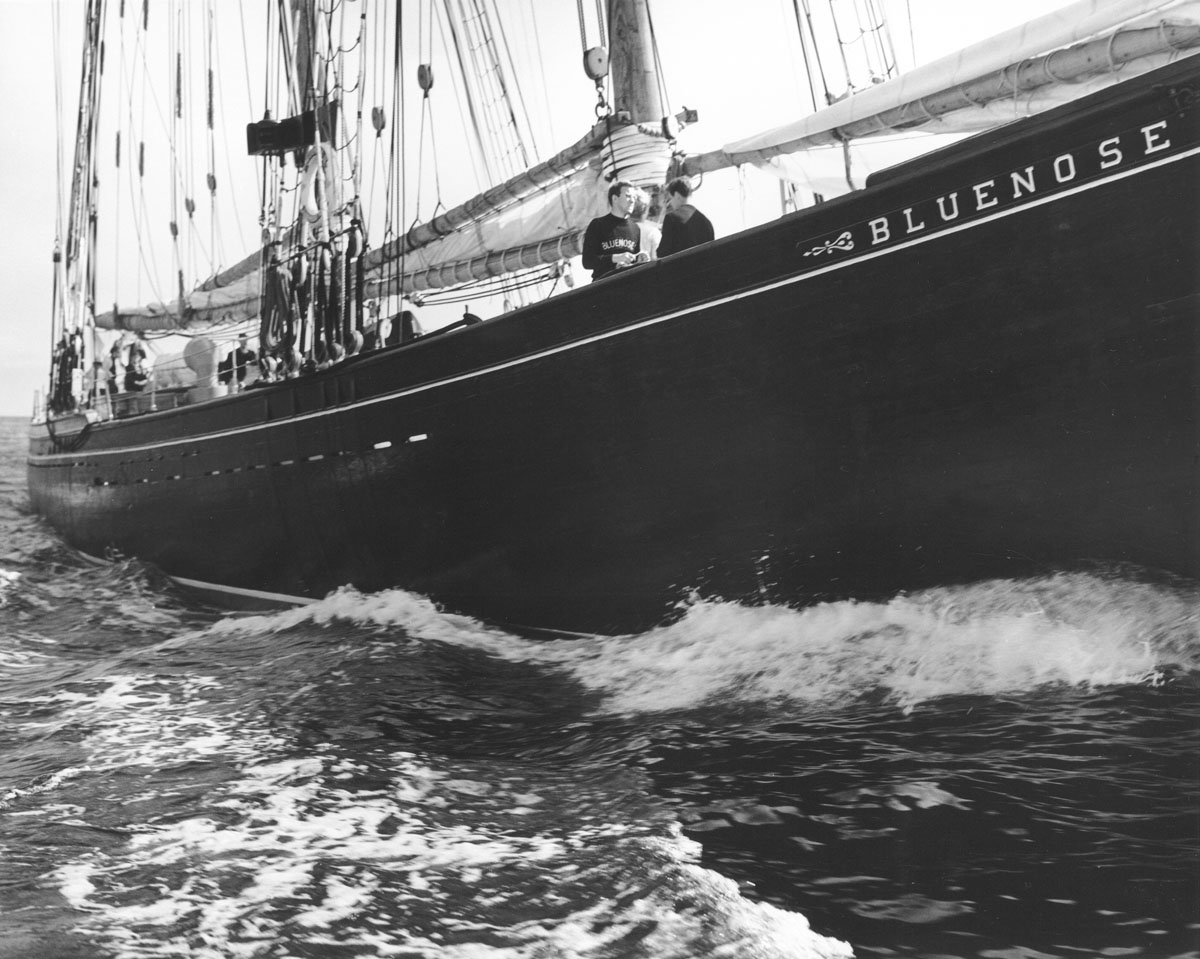Nova Scotia Archives
Bluenose: A Canadian Icon
How the Bluenose Got Its Name
If you're not from Nova Scotia, you're probably wondering how the Bluenose got its name. Even if you are from Nova Scotia, you may still be curious about that peculiar little word....
The term 'Bluenose,' used as a nickname for Nova Scotians, dates from at least the late eighteenth century.1 The first recorded use of the word was in 1785 by the Reverend Jacob Bailey, a Loyalist clergyman living in Annapolis Royal after the American Revolution. Writing to a friend that year, Bailey complained about the outcome of the recent elections, where the political lines had been clearly drawn throughout Nova Scotia between the newly-arrived Loyalists (Americans will know them as 'Tories') and the New England Planters — long-time residents since at least the 1760s. Bailey noted sourly that "The blue noses, to use a vulgar appellation...exerted themselves to the utmost of their power and cunning." In another letter the next year, Bailey continued his complaints by listing several regrettable aspects of life in Nova Scotia, one of them being "Violent contentions between the Loyalists and the old inhabitants called blue noses."
The Oxford English Dictionary awards first published use of the term to Thomas Chandler Haliburton, in The Clockmaker; or, the Sayings and Doings of Samuel Slick, of Slickville (1838). Sam was a fictionalized Yankee traveling salesman, sharp as they come, whose specialty was clocks — and when he described his standard sales pitch, he chuckled heartily over the typical gullible response from his Nova Scotia customers: 'When bluenose hears that, he thinks he's got a bargain.'
In the end, who knows what the word really means, or where it comes from...! Maybe it describes Nova Scotian noses in winter; perhaps it began as the name of a mottled purplish-blue potato once common in the Annapolis Valley and eaten by everyone. Regardless of its origin, the term caught on and from the mid-nineteenth century 'Bluenose' was widely used in the names of publications, incorporated companies, businesses, railway services — and boats. Yes, boats — the Grand Banks fishing schooner Bluenose was by no means the first vessel launched in Nova Scotia to bear this famous name; there were several others before it.
Other examples of the name being used commercially in the early years include a Halifax-based magazine called the Blue-nose (1853); a Digby newspaper, the Bluenose (1860s-70s); ‘The Flying Bluenose', an express train operated by the Windsor and Annapolis Railway (1891); and the Bluenose Gold Mining Company, New Glasgow (1896). Over time, the word became a term of endearment, unique to and synonymous with Nova Scotia and Nova Scotians. Is it any wonder that the Halifax-Lunenburg consortium, plotting in 1920 to build a Grand Banks fishing schooner that would out-sail them all, chose ‘Bluenose' as the name for the vessel of their dreams?
1Information regarding origin and use of the term 'Bluenose' is generally from research material compiled by Brian Cuthbertson, 2003.
Results 1 to 4 of 4 from your search:
The Bluenose Wing 'n Wing
Date: ca. 1956
Photographer: William E. deGarthe
Reference: Documentary Art Collection Nova Scotia Archives 1986-352 no. 7
Before trip to England, 1935
Date: 1935
Photographer: Allan Fraser
Credit: Fisheries Museum of the Atlantic
Reference: Fisheries Museum of the Atlantic FMA, F87.78.15
Marine Survey of Bluenose
Date: ca. 1940
Photographer: W.R. MacAskill
Reference: W.R. MacAskill Nova Scotia Archives 1987-453 no. 352
Bluenose II from starboard at sea
Date: 1969
Reference: Nova Scotia Information Service Nova Scotia Archives NSIS no. 23987



